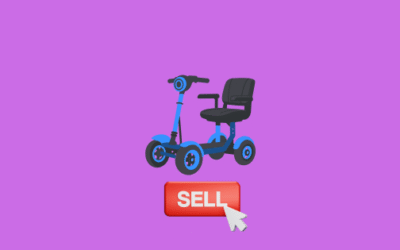Key Takeaways For Crutches vs Walking Frames (Walkers)
Crutches Overview: Support and Balance: Support for lower limb injuries, surgeries, or limited weight-bearing conditions. Upper Body Engagement: Requires both arms for support, demanding upper body strength and coordination. Temporary Use: Intended for short-term recovery, not designed for long-term use.
Walking Frames (Walkers) Overview: Stability and Support: These frames are designed for stable walking platforms, especially for individuals with balance and mobility issues. Two-Handed Support: These frames are used with two hands, offering high stability for individuals needing extra balance support. Long-Term and Daily Use: These frames are suitable for prolonged or daily mobility needs and are commonly used by older individuals or those with chronic mobility issues.
Considerations for Choosing: User Condition: Choose based on the individual’s specific condition, mobility level, and duration of assistance needed. Safety and Stability: Walking frames provide higher stability, which is ideal for individuals with balance challenges. Duration of Use: Crutches for temporary mobility limitations; walking frames for long-term or chronic support.
Top Walking Frames
Top Crutches
Crutches and walking frames, also known as walkers, are mobility aids designed to assist individuals with varying mobility challenges. While both mobility aids are designed to enhance movement, crutches and walking frames serve distinct purposes and offer different features. This comprehensive comparison will explore the key differences between crutches and walking frames to help you decide which option best meets your needs.
Crutches
- Support and Balance: Crutches are primarily used to provide support and balance assistance to individuals with mobility challenges. They are often prescribed for those recovering from lower limb injuries, surgeries, or conditions that require limited weight-bearing on one or both legs.
- Upper Body Engagement: Crutches require both arms for support. Users place the crutches under their arms and use them to help lift their body weight, thus taking the pressure off the lower limbs.
- Operational Effort: Using crutches can be physically demanding, demanding upper body strength and coordination. Users need to maintain balance while walking and may require good arm strength for stability.
- Temporary Use: Crutches are typically used during recovery from injuries, surgeries, or medical conditions. They are meant for short-term or temporary mobility limitations and are not designed for long-term use.
- Indoor and Outdoor Use: Crutches are suitable for indoor and outdoor use. Some crutch models are designed to handle different terrains, including rough outdoor surfaces.
Walking Frame (Walker)
- Stability and Support: Walking frames, or walkers, are designed to provide a stable walking platform and support for individuals with balance and mobility issues, particularly older people. They offer a wider base of support compared to crutches.
- Two-Handed Support: Walkers are used with two hands and provide support on both sides. They offer high stability and suit individuals who need extra support to maintain balance.
- Operational Effort: Walking frames require less upper body strength and coordination than crutches. Users hold the frame while walking, which offers stability and support while reducing the risk of falling.
- Long-Term and Daily Use: Walkers are often used for long-term or daily mobility needs, especially by older people or those with chronic mobility issues. They are not restricted to short-term use during recovery.
- Indoor and Outdoor Use: Walkers are primarily designed for indoor use, although there are models with larger wheels that can handle outdoor terrain, such as paved sidewalks and smooth pathways.
Considerations
- User Condition: The choice between crutches and a walking frame depends on the individual’s specific condition, the level of mobility impairment, and the duration of assistance needed.
- Safety and Stability: Walking frames provide higher stability and support than crutches, making them suitable for individuals with balance issues.
- Duration of Use: Crutches are typically used for temporary mobility limitations, while walking frames are often used for long-term or chronic mobility support.
Summary Of Crutches Vs Walking Frame
In summary, the decision between crutches and a walking frame should be based on the individual’s specific mobility requirements, the duration of assistance needed, and the level of support and balance necessary during walking. Healthcare professionals can provide valuable guidance in determining the most appropriate mobility aid for each person’s unique circumstances.
Top Walking Frames
Top Crutches
Explore More Mobility Aid Options: Crutches vs. Walking Frames
- Best Crutches for Support and Comfort – Discover the best crutches designed to provide support and stability for those recovering from injuries or surgery.
- Best Walking Frames for Stability – Learn about walking frames that offer enhanced stability for individuals with balance issues.
- Choosing the Right Mobility Aid – Get tips on selecting the right mobility aid based on your specific needs and lifestyle.
- Crutches vs. Canes: Which is Right for You – Compare crutches and canes to determine which one provides the best support for your mobility challenges.
















